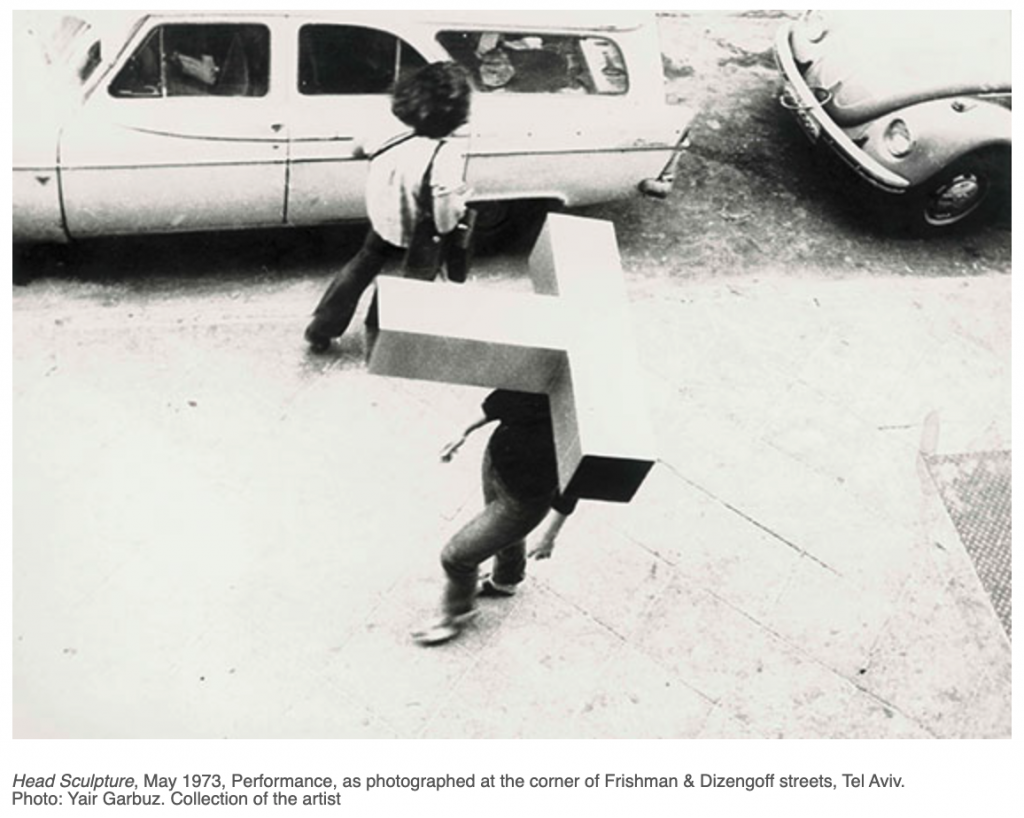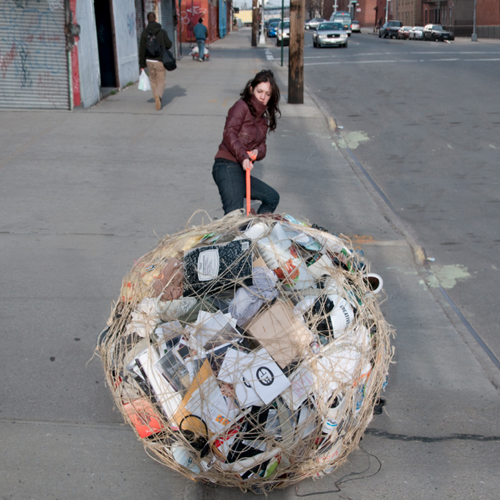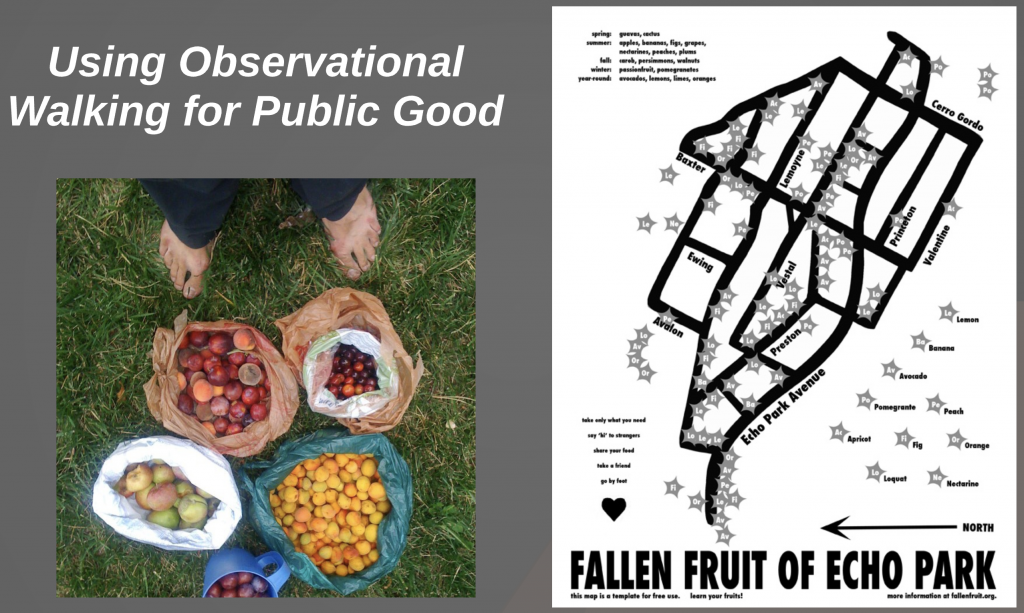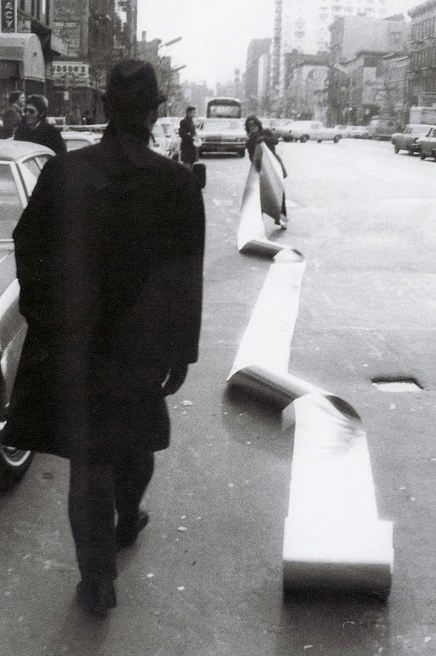[image credit]

Efrat Natan, Head Sculpture
Head Sculpture (1973) by Efrat Natan (1947-) has photo documentation that presents a descriptive view of what occurred during the walking performance, and what it looked like from multiple angles. In this work, Natan used a wearable T-shaped sculpture that narrowed the field of view and hearing for the wearer, emphasizing concepts of surveillance and mapping. The photographs showcase both the sculpture and the figure in the street.
“Natan walked through the streets of Tel Aviv, her head covered by a hollow plywood, T-shaped box/mask/sculpture the morning after [the independence day] military parade [in Jerusalem, five months before the outbreak of the Fourth Arab-Israeli War], meld[ing] the language of minimalism, body art and installation art of that period with Christian influences (public self-signifying is a mark of Cain; the act is one of walking the Via Dolorosa).” [credit] The sculpture “can be read as a cross, as an airplane, and even as an angel with outspread wings.” [credit]
“The Minimalism went well with my shyness: it was a kind of mask. The space, which sits strongly in my body, led me to Body Art”, Natan says. Body Art sets up the artist’s body as a central object to be viewed, and puts the tension between the body as subject and as object in the center of the action.” [credit]
“The T-shape is reminiscent of the children’s house in her kibbutz. The sculpture’s visual appearance calls to mind Robert Morris or Charlotte Posenenske. Due to her restricted field of vision, Natan could only see part of the people surrounding her.” [credit] ”
“The kibbutz, where she had lived from her second year of elementary school until the end of her 11th-grade year in high school. The T-shaped structure of the children’s house, the most familiar architectural structure of her life in the kibbutz, contained bedrooms, a dining room, the showers, and a classroom. The long side of the children’s house, with the dining room in the center and the bedrooms on both its sides, faced west.” [credit]
“Head Sculpture (1973) was Efrat Natan’s first street performance to a chance audience. In many ways, this work was a harbinger of an artistic genre of quiet action in the public space, which was recognized thanks to the remaining photographic images. Such works, that combine body art and minimalist sculpture, are formed in a space that is devoid of institutional artistic context, with the very occurrence often affecting the content of the work. Thus, for example, the title of this work was given by two random tourists who were observing Natan walking along Dizengoff and Frishman Streets, her head stuck in a hollow MDF sculpture in the shape of a cross, or the letter X or a plus sign. One tourist said to the other: “Look! A head sculpture!”” [credit]
From the Wanderlust catalog: “Natan draws on her upbringing in her work, which reflects the Israel “religion of labor” and the ideological imperative of “making do with little.”
“The flattened aerial perspective transforms the human form into a sculptural object and suggests modes of surveillance and mapping, which are emphasized by the function of the sculpture itself”
“Her performance suggests a framing and reduction of the senses and the ambiguity inherent in collecting a narrow field of vision and hearing.”









